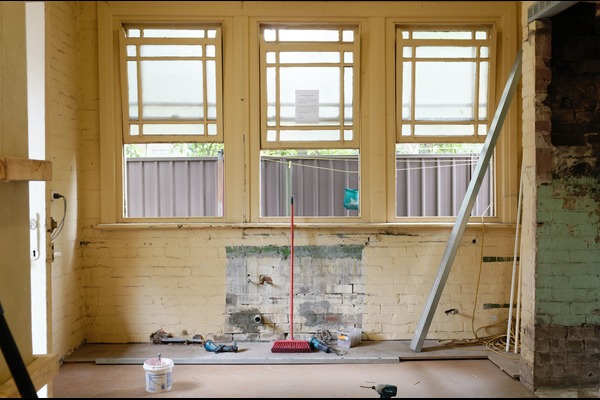8 Questions To Ask Prior To Buying Land
Buying a piece of land is one of the most critical aspects of building. It is the place that your dream home will rest upon for a lifetime; therefore, it is important to absorb as much knowledge as possible before you ever put a deposit on a piece of land for sale.
Are your dreams realistic, and what is the eventual return? Consider the surroundings, the community, and whether the land is wet or dry. What does the adjacent property look like, or who are your neighbours? Is the land worth the money you will be spending to purchase a parcel? How many acres is the land, and does the piece of land provide the adequate space you need to hold your dream home’s building design?
Here are 8 questions you should get answered before buying a piece of land:
- Does the surrounding area have quick exit points to major highways? This may not seem like a big deal, but in case of natural disasters or even for the convenience of getting from one place to another in a hurry, major highways are essential to the land you want to live on.
- What is the area going to be like in 10 years? Does it have sustainable infrastructure, or is the community destined to struggle with time? No one can be a fortune-teller, but you should study the history of the area for any revealing tell-tale signs that may determine the worth of your property further down the line. If recent malls and housing developments have been springing up nearby, that’s a good sign of growth.
- Anyone who is considering buying land needs to look at the overall value of the land and compare it with all the options. Look for intangibles, like wide open areas or land that can be used for farming, industry, or even other real estate opportunities.
- How accessible is the land you’re going to buy? For example, if you live too far out in the woods, it could cost you a pretty penny to hire builders who will charge for extra travel and materials. It could also cost more for heat, snow removal, road improvements, etc. It may not be a good thing if the land is too isolated.
- If at all possible, try to rent property in the area before you buy the land. Doing this will allow you to get to know the community and see if it’s really somewhere you want to live.
- Another good idea when considering buying land is to look at the zoning requirements. Look for any potential problems with the building plans you may have in the future. You don’t want to buy land somewhere only to discover there may be limitations on your home building plans, or perhaps you would not be allowed to set up a business on your land because of zoning restrictions. Find out now before you buy land!
- You should also look into any potentially hidden industries in the surrounding area that could come as a surprise later on. You don’t want to buy a piece of land and find out there is a big nuclear power plant or factory nearby that sends its foul air or poisonous gases your way.
- Research the parcel’s background to see if it has a hidden history, such as hazardous waste accidents, ghost stories, or any other weird circumstances. Make sure it has a clean title as well.
After you find out the answers to these 8 considerations in buying a plot of land, you will feel more peace of mind that the land you are buying is a good choice. It will also be less stressful; otherwise, you could run into a lot of problems when building a home on your new land. Clean land has the potential to become an investment for you in the future. Never assume anything in the real estate business. Any extra information that you can find will go a long way in your search!
8 More Amazing Restorations!
Rag to riches stories, drag to fab situations, dramatic and awesome restorations, all of these make for inspiration. You probably enjoy watching an episode of Extreme Makeover as much as the next person. There is nothing more exciting than watching a dull building transform into an awesome masterpiece.
As a home restoration expert, I can confidently say that not all restoration projects cost a fortune. It simply depends on the amount of work needed and the picture you have in mind. You can get a really awesome renovation for a few thousand; however, a big project can run into hundreds of thousands.
If this is the case and your funds cannot carry what you have in mind, all is not lost. You can apply for a bridging loan to fund your renovation project. A bridging loan provides a way to raise short-term finances that will allow you to get your renovations done while looking for other sources of long-term finance. This way, your project won’t get stuck for lack of funds, and you can join the few lucky ones whose homes are beautiful enough to grace home magazines and websites.
While virtually every restoration is beautiful in its own right, check out the following 8 to see examples of some really amazing restorations.
Up one level
A two-bedroom bungalow in Hampshire became too small for the growing family, despite the fact that it had a small terrace out back. Due to the sloping terrain surrounding the house, building an extension would have been too expensive. The best approach, therefore, was to construct a new first floor, adding a dual-pitched roof that allowed all bedrooms to be located upstairs. This made it possible to have a bigger and better living room on the ground floor.
The original bedroom was joined into the hallway to create a bigger entrance with a staircase and vaulted ceiling. The overall effect is one of extreme creativity coupled with an awesome, stylish white finish.
An astonishing remake
A 1950s bungalow in Oxfordshire was brilliantly converted into an ultramodern masterpiece, with much of the materials coming from the original structure. The owners wanted a modern home suitable for their growing family, and the result was a striking difference from the drab-looking farmhouse-type bungalow with three bedrooms and a loft. The new structure came with better access to the garden, a well-lit living area, and a glazed extension, resulting in an awesome courtyard setting.
From old to modern
Almost everywhere in the UK, you are bound to come across a ranch-style home. One such home was bought by a family in Manchester with the intention of modernising it. The idea was to give it a whole new look without tearing down the building or changing the structure in any way. The result is an exciting new structure with a silhouette design made by creating a bigger living and sleeping area and by adding a new parapet to the roof. A dried Douglas fir coat on the old brick exterior gave the building an endearing rustic atmosphere, which also allowed it to blend in perfectly with other houses in the neighbourhood.
Meet the Tudors
Mark and Julia came across a Georgian home for sale in Shropshire and fell in love with it immediately. After buying it, they spent the next ten years putting it together. The result is an awesome Tudor-style home that anyone will envy. The new design involves bringing down the height of the house; they were also able to add twin three-story wings, leaving the original two-story building in the middle to create a balance. One entire wing has a guest entrance, a ground-floor living room, a kitchen, and two bedrooms. It is obvious that very close attention was paid to every detail and aspect of this awesome renovation.
Dreary home to period charm
Restoring a home to its original state is a very British thing to do, or so the Brits think. But what cannot be denied is that period homes have a charm that modern buildings do not, so you cannot blame anyone who wants to restore their homes to their original vintage beauty. A 19th-century terraced building in the south-west of London is one such building that became a victim of the 20th century. Lots of modern updates helped strip off its period charm, making it a ghost of its original self.
Restoring the original Victorian sash windows and exposing the brick walls are just some of the steps taken to restore this home to its lost glory.
When ugly just won’t work
Owner Jo Glenton realised that his 1960s Cheshire 3-story property was ugly, despite its good proportions and great location. A lot of’major surgery’ was carried out on the property to bring it to a point where anyone can be proud to own it.
This involved dealing with the ugly brickwork and using a soft colour scheme to create a balance between every component of the house. The windows are enlarged to allow for more natural light, and the green tile on the roof was replaced with slate to allow for a more natural look. The overall result is a testament to creativity and will.
Renovating for space
In 2012, Sam and Patrick Regan came across a detached 1950s home with a little bit more than the regular wear and tear. Leaking roofs, rotten and broken windows, and very little visual appeal are putting a brave face on what the new owners were to face in their new home. Even the estate agent couldn’t help but admit that the property needed a bit of work.
Despite these limitations, Sam and Patrick set about converting their four-bedroom property into a five-bedroom home for their family.
Today, Sam, Patrick, and their family have zero regrets and are completely enjoying their new home.
Utilising the loft
Designer Sarah Wallis bought a single-story flat in London that was made up of a set of small rooms left abandoned since sometime in the 1970s. Despite the state of the property, Sarah was willing to take it and invest time and money into renovating it into a whole new loft flat. The project involved knocking down the walls between rooms and making a large open space for the living and kitchen areas. Two-thirds of the ceiling was then moved to allow for an extra bedroom and bathroom. The overall result is an awesome-looking loft maisonette.
10 Top Reasons For Using A Bridging Loan in 2018
As typical bank loans become more difficult to assess, bridging loans are increasingly becoming the go-to option for not just people but also businesses that are in quick need of cash.
Initially, a bridging loan was simply a temporary or short-term loan used by homeowners to get quick cash to facilitate the purchase of a new home. The loan operated by “bridging the gap” between a homebuyer’s new mortgage and the sale price of a new home in the event the homebuyer hasn’t yet raised funds by selling his or her current home. Such a bridging loan would be secured on the buyer’s current and yet unsold home, while the loaned sum is used as a down payment on the new home. But over the years and due to its increasing popularity, bridging loans have evolved into a more versatile financing option.
As of 2018, individuals and businesses alike have found other ways to make the most of bridging loans. Below, we’ll be looking at the top five ways individuals and companies will use bridging loans in 2018.
How individuals are using bridging loans in 2018:
- To avoid repossession: For homeowners who lack the financial capability to stave off a repossession, bridging loans have become a saving grace that can be accessed quickly and used to settle debts. If debts are piling up and there is no immediate cash source available, a bridging loan can be used to quickly settle a portion of the debt for the short term and thus delay a repossession.
- To buy a property at auction: If a wonderful property at a great price is suddenly made available at an auction, instead of letting the opportunity pass by, a bridging loan can be used to finance the purchase of the auctioned property. It can also be used to snatch a repossession and grab a bargain.
- Property development purchases: If you need to renovate or upgrade your property and you require quick cash, a typical bank loan might take a long time to get approved or might not even be approved at all. A bridging loan, on the other hand, can be applied for quickly and received within a few days. The loaned sum can then be used to convert your home, refurbish it, or even extend it.
- To buy time to seek a longer-term loan provider: If you need money fast for a pressing matter, you can use a bridging loan to finance yourself for the time being until you are able to get a longer-term loan provider. This move can be an expensive one, especially in light of the cost of bridging loans, but it can also be a fast and effective solution to a pressing financial need.
- For capturing an investment opportunity: Opportunities are unpredictable and can pop up at any moment, including moments when you lack the financial capability to grab the opportunity and make the best of it. But instead of letting the opportunity pass you by due to a lack of funds, you can grab a bridging loan and use it to seize the investment opportunity. This tactic can be used to change the financial fortune of anyone who is presented with an especially favourable investment opportunity.
These are just some of the ways people are currently making the best of bridging loans.
How businesses are using bridging loans in 2018
It’s not just individuals that are making the best of bridging loans, as businesses have also found ways to use the fast and easy option to their benefit.
Some of the ways companies are presently utilising bridging loans include:
- For grabbing business opportunities: In the world of business, time is of the essence, and the ability to make split-second financial decisions can make the difference between a huge profit and a great opportunity lost. Rather than being restricted in investment opportunities due to a shortage of funds, bridging loans provide an avenue for businesses to get loans fast and make financial commitments to sudden and exciting new opportunities. A bridging loan can be used to finance the buying or starting of a new venture or to acquire another business in a strategic corporate move. This is possible thanks to the fact that a bridging loan can be accessed within a few days instead of the lengthy time periods required for approval of traditional loans.
- For enlarging commercial operations: A business that’s looking to expand its operations into new locations or diversify its business can use the finances from a bridging loan to accomplish this quickly. Such a loan can also be used to purchase new equipment and serve as regular funding to accomplish new business objectives.
- For refurbishments: An office refurbishment might be long overdue, but a company is unable to carry it out due to financial constraints. A bridging loan can take away such constraints by offering some quick financing to fix up either the office area or give the retail space a facelift. A benefit of this is that the loan can be repaid when the business premises are remortgaged after the refurbishment has boosted the value of the premises.
- Refinancing owed debt: In the event there is a short-term cash flow crisis that leads to debt, a bridging loan can help pay it off or buy more time until the business can get its affairs in order. Also, refinancing can aid in consolidating existing debts into a single entity, which is much easier to manage. The loaned sum can be used to pay off lenders or settle outstanding payments to key providers and suppliers.
- For relocation: If your business is looking to move to a better location in 2018 that will expose it to greater opportunities, bridging finance can help facilitate the relocation by providing the cash you need to purchase a new business space. It’ll also make available cash for expenses such as purchasing new furniture, setting up a new IT infrastructure, removals, and much more.
So rather than restrict yourself to the arduous process of applying for a traditional loan, try out a bridging loan for faster access to needed funds as well as a less strenuous loan application process.
10 Super Tips for Home Renovation for Massive Profit
Studies show that more people are looking for homes that suit their lifestyle. However, they may not have the time, skill, or inclination to fix up the property on their own. This is where smart investors can make massive profits. Renovations can greatly increase the value of a property, and an eagle-eyed investor can pick up a property for a song, put in a bit of cash for renovations, and sell it off at a huge profit.
In this article, we look at 10 tips to adopt that would greatly increase the value of a home after renovation:
- Do your research: Take a moment to suppress the excitement of the possibility of making a killing in a renovated property and research the improvements that are more likely to add value to the home. When doing your research, you need to take the following factors into consideration: the neighbourhood prevalent taste, the style of the house, and the current market. This information will help you decide the type of renovation you need to carry out and the part of the property you should pay more attention to. No matter how fancy they are, changes that don’t fit won’t fly, and rather than increase the value of the property, they may actually make it drop.
- It’s not about you: Everyone has an idea of what their dream home should look like. But if you are renovating for profit, adding your idea of ‘character’ can be counterproductive. What is attractive to you can actually be a turn-off for someone else. Therefore, ensure that your plans for renovations actually add value to the home. You need to think about what the buyer will want, not what you want. Are you renovating for young couples or a small family? In order to make massive profits from your renovation, you have to end up with a product people will want to buy.
- Budget: if you were renovating for yourself, then it would have been okay to splurge a bit, but if the plan is to make a massive profit, then you may need to be cautious with your expenditure. It is a good idea to engage a professional who will value the property and help you come up with a good budget. Aim to sell off the property at double what you spent on the whole project, with a little bit of buffer to give room for negotiations.
- Get your finances together: You have your estimate; now is the time to check your savings account. No matter how cautious a budget is, market conditions can change suddenly, and this can cause a spike in prices. If you feel that what you have saved up will not see the project through, you can easily raise more money by applying for a bridging loan. A bridging loan offers you a way of quickly raising money in the short term to finish your project. Once you sell the home, you can pay off your debt. However, it is important that you have enough money to see you through the project. It just wouldn’t do to get stuck halfway because of insufficient funds.
- Make it simple: Sometimes, simplicity can be the best way. There are lots of DIY home improvements that could be of great help to your renovations. You don’t need a large firm to handle the renovations; a fresh coat of paint, new door knobs, new bathroom fixtures, and replacements here and there can still improve the value of your property. Unless you absolutely need to, your aim is to make the house the second or third best on the street and nothing more.
- Create a network of agents: You need the right people to come see your renovated home in order to get a bid. Connecting with agents in your neighbourhood will expedite the process. Estate agents always seem to have a ready list of people looking to buy houses, and your prospective customer can be on that list. Let them know what your plans are, so they can get you the right buyer as you are finishing up.
- Invest in a competent team: No matter how all-around you are, there are just some things you cannot do alone, such as renovating a house. You will need plumbers, electricians, painters, cleaners, and so on. Look for a competent local team that can give you a good job at the right price. Preferably, look for a small to midsize outfit that won’t cost you much so that you can still maintain your goal of making good profits.
- Make use of spaces: If the property has extra space, this can be converted into an extra room or a bathroom. And if the space cannot be used inside the house, you can create an extension for the house, such as a car garage, a children’s playroom, or a storage shed. The more features you are able to coax out of the property, the higher the price you can ask for it.
- Lighting makes perfect: Alternatively, rather than convert empty space into spare rooms, you can actually knock down walls to free up space in the sitting room or dining area. This will allow light to enter these areas, creating a warm, welcoming atmosphere that will significantly increase the appeal of the house.
- Not so visible renovations: If you have enough funds, you may consider bringing the house up to spec, such as installing a home security system, insulation, and a heat and cooling system. Even though these renovations are not as obvious as a fresh coat of paint or a new roof, they have been known to significantly add to the value of a property. The new owners will not need to do all of this, and you can confidently ask above the market price for these privileges.
Closed and Open Bridging Loans – What’s the Difference?
It’s usually not until you make the decision to apply for a bridging loan that you discover just how many different types of bridging loans there are. Commercial loans, residential loans, second-charge bridging loans, and so on. Not to mention the often misunderstood concept of “open” and “closed” bridging loans.
Nevertheless, it is important to understand the key differences between the two if you are looking to take out a bridging loan for absolutely any purpose.
Closed bridge
In the simplest of terms, a closed bridging loan indicates a transaction where the borrower establishes a planned and defined exit strategy before the loan has even been taken out. Or, to put it another way, the borrower knows exactly when and how the funds will become available to repay the balance of the loan, in accordance with the requirements established during the application. In most instances, bridging lenders insist on knowing exactly when and how the balance of the loan will be repaid; hence, most bridging loans are considered closed bridges.
Open bridge
By contrast, some lenders are happy to offer somewhat more accommodating loans in the form of open-bridging loans. In this instance, the borrower is not able to provide a concrete repayment roadmap, usually because the funds are in very short supply. As such, they may have had insufficient time to think carefully about the specifics of the repayment aspect.
In terms of when open bridging loans are provided, it could be that the borrower already has some kind of strong working relationship with the lender or that their track record, in general, is one of flawless reliability. It could also be that the borrower has every intention of paying back the bridging loan when the property being financed is subsequently sold. They cannot provide an exact date or comprehensive overview of their repayment plans, but they nonetheless have a viable exit strategy. If the lender is confident that the borrower can repay the loan successfully, they may be willing to offer an open bridging loan.
Alternative bridging options
If bridging loans in general don’t represent an appealing or viable option, there are alternatives available. Examples include short-term asset finance, standard overdraft facilities, and so on.
In the case of short-term asset finance, it’s essentially a case of arranging secured loans by providing the required collateral. From jewellery to luxury cars to paintings to property to business assets and so on, just as long as you have assets to the required loan value, it is relatively easy to gain access to the funding you require. The application process can be comparatively simple, and interest rates and borrowing costs are typically flexible, depending on the lender you go to.
As for overdrafts and the use of general personal credit facilities, it isn’t generally recommended to fund major projects or purchases this way. The reason is that, as they’re not specifically designed for these kinds of purposes, they have a tendency to be both restrictive and expensive.
If you’re looking to explore the various options available to you, it’s advisable to speak to an independent broker with a wide-reaching network of mainstream and independent lenders.
For more information on any aspect of conventional or alternative financial products, get in touch with the BridgingLoans.co.uk customer support team today.
Bridging Loans Growing in Appeal Across Multiple Areas
It’s becoming clear that the rise in bridging loan activity isn’t about to go into reverse anytime soon. 2016 brought about record growth for the industry, and this year is already off to a flying start. But what’s particularly interesting is the way in which key players are reporting not only a dramatic spike in overall interest in this kind of financing but also a dramatic change in the lenders and intended purposes of the loans being investigated and applied for.
So along with the usual commercial property development financing requirements, exactly which other areas are driving this enormous increase in overall bridging loan activity?
Domestic relocation
Well, firstly, there’s been a significant increase in the number of lenders opting for bridging loans as part of the everyday domestic relocation process. In so many instances, the delays involved while closing the sale of a currently owned property can make it difficult, or perhaps even impossible, to take advantage of outstanding purchase prospects, which may present themselves for a limited time only. In order to avoid missing out on such opportunities, many homebuyers are turning to affordable, short-term bridging loans as a means by which to purchase their dream properties while waiting for their own home’s sale to close.
Auction property sales
Likewise, outstanding opportunities often present themselves at property auctions, though meeting the payment requirements set out by those selling the properties can be difficult. Along with immediate deposits payable on the day, it is usually necessary to pay the entire balance within a matter of days, certainly no more than a couple of weeks. While conventional mortgage products are entirely unsuitable for such purposes, bridging loans are proving to be uniquely accessible and affordable for auction property purchases.
Renovation and extension
Across both domestic and commercial sectors alike, bridging loans can be uniquely convenient and beneficial when it comes to carrying out urgent building renovations, extensions, and other maintenance work. It could be that, for any number of reasons, such work is essential in order to close a sale or perhaps begin letting out the property to tenants. Where time is a factor and it is preferable to pay back the loan in a comparatively short period of time, bridging loans are proving to be incredibly versatile for urgent property work of all kinds.
Business shortfalls
Last but not least, it’s often the urgency with which the money is needed that makes bridging loans ideally suited to the needs of smaller to medium-sized businesses. From unexpected expenses to tax payments to temporary revenue shortfalls and so on, there are endless reasons why any business may need a quick yet relatively sizeable cash injection in order to prevent a potential disaster. When this occurs, working with a leading broker specialising in alternative financial products can help open the door to a variety of intelligent products and services. Gaining access to affordable and quickly available financing can often be a matter of life or death in the small business world, which is precisely why bridging loans are becoming assets of such extreme importance.
Non Status Bridging Loans – Fast Secured Finance for Any Purpose
Do you need a competitive, non-status bridging loan?
If you are looking for flexible, low-cost finance secured against your assets that won’t be affected by your credit rating or borrowing history, then a non-status bridging loan is the perfect solution. When a property owner applies for non-status bridging finance, the lender is less concerned about your financial past and more interested in the real estate that you are providing as security.
The vast majority of secured loan products are quite complicated to arrange and can take weeks to process, assuming your application is successful in the first place. Of course, many loan specialists are offering bad credit products, although the cost of borrowing is usually excessive, to say the least. With a non-status bridge loan, you can get a decision in less than 24 hours, and the funds are typically made available within 5 to 7 days.
How much can I borrow?
In most cases, non-status bridging finance is available with a loan value of up to 70% or more. However, if a borrower can provide additional security by offering a second or third property as collateral, an LTV rate of up to 100% is possible. Of course, this will entirely depend on the lender you choose to work with. By using the services of a specialist broker such as UK Property Finance, sourcing a cost-effective product that is tailored to fit your individual borrowing circumstances is effortless and stress-free.
Non-status bridge finance for any purpose
With a non-status bridge loan, you can release the equity in a property, or multiple properties, that you own and use the funds for any reason you see fit.
Common uses of this type of finance include:
- Financing property refurbishment and development
- Funding a property purchase while waiting for a different property to sell
- Buying property at auction
- Paying an urgent HMRC tax bill
- Eliminating short-term cash flow problems in business
Bridging loans are short-term products that can be used for all manner of reasons. With low-interest rates, flexible borrowing criteria, and the option of rolling up the interest until the end of the loan term, non-status bridging loans are an incredibly attractive option that can be arranged swiftly and effortlessly, regardless of your personal borrowing requirements.
Using a Bridging Loan to Pay an Outstanding HMRC Tax Bill
If you are a property developer or business owner who is finding it difficult to raise the required funds to pay off an urgent HMRC tax demand, then a bridging loan can be a highly practical and uniquely serviceable lifeline. Although there are various sets of circumstances where HM Revenue and Customs (HMRC) may choose to grant you a payment extension, these are not always available, and failure to pay your tax bill on time can result in very serious consequences.
There are two situations where HMRC will expect and demand an immediate payment from you, and these will occur if:
- 1) HMRC thinks you can pay now.
- 2) HMRC is not convinced you can get your tax payments up to date.
Either way, if you are running your own business, struggling to keep up with your finances owing to unpaid invoices and other cash flow problems, and suddenly faced with an immediate HMRC demand that could destroy everything you have worked so hard to achieve, then there could be an easy way out. A bridging loan secured against your property assets could be the perfect tool that will give you the time you need to get back on your feet and back in the red.
By choosing to take out a short-term borrowing product in the form of a bridging loan, you can pay off your tax bill now and then pay off the bridging loan when you are in better financial shape further down the road.
It is, however, important to remember that bridging loans are only intended as short-term products, so you will need to think about how you will pay the money back when the loan term is about to expire.
In some cases, a bridging loan can be used as a speedily arranged, temporary fix until a more permanent funding solution is in place, such as a commercial remortgaging product or a second charge loan. Bridge financing is particularly useful in these situations, as most remortgaging and second-charge products take several weeks or months to arrange, which will not give you enough time to avoid enforcement action.
If you are a property developer faced with an urgent HMRC tax demand, then it could be that you simply need a few more months to get your project finished before reaping the dividends. Again, a bridging loan arrangement can be put into place quickly, giving you access to much-needed funds in the meantime so that you can pay off the tax bill quickly and get the work completed.
With low borrowing rates, the option to leave the interest rolled up until the end of the loan term, and the ability to secure finance against the equity tied in with multiple properties you already own, a bridging loan is a fast, convenient, flexible, and affordable solution that could solve all your HMRC tax problems quickly and effortlessly.












